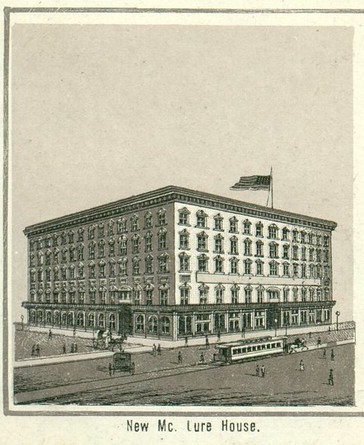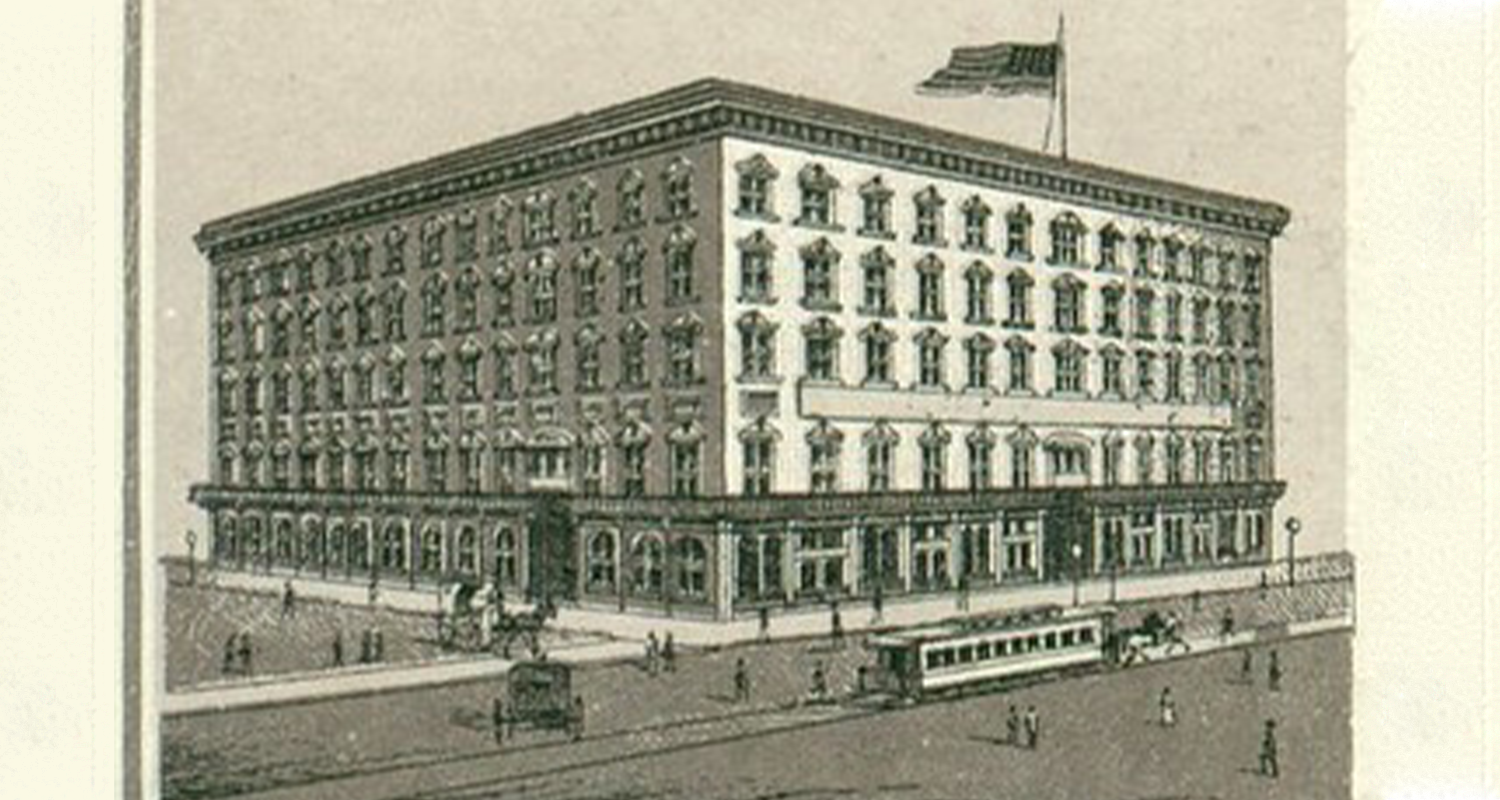Food is an integral part of human life. Not only is it what fuels and energizes our day, but food gathers people to share and connect in community. Everyone has a favorite dish and many of us still have fond memories of family recipes that have been passed down through the generations.
But…if someone offered you “calves foot jelly” or “pine apple cheese” today, you might question their taste. Yet, both dishes were part of a meal served here in Wheeling. So, what was on the McLure House menu in 1852?

The McLure in 1852
This “Bill of Fare for R. R. Supper,” was actually a menu for the meal served on the McLure House Hotel’s opening day on March 4, 1852.1 The McLure House Hotel is located on the corner of Market and 12th Streets and began its life as an elegant lodging option, supposedly the largest hotel in Virginia at the time.2 Over the McLure’s long history, it has been host to 11 Presidents and numerous other famous patrons.3
At the time that this supper was served, patrons could tie up their horses and carriages to the hitching posts located conveniently in the open-air center courtyard of the hotel.4 Within the next year, the B&O Railroad would reach Wheeling. West Virginia would not become an official state for another 11 years and slavery was still legal. In 1852, Wheeling was in the early stages of becoming the region’s industrial center and primed for increased business and activity–hence the need for proper lodging and fine dining.

Unique Dishes
Even almost 170 years later, most of the food on the menu is recognizable, like chicken salad, roast beef, or, of course, Hennessy brandy. However, some select dishes are more unique and uncommon in today’s culinary traditions.
For example, calves foot jelly, or “calf’s foot jelly,” is a savory jelly that is made out of the natural liquid gelatin extracted from boiled calves’ feet and combined with spices, lemon juice, and wine. If sugar is added, the jelly can be served as a dessert. According to the Food Network, there is a rumor that calves foot jelly could be “restorative for invalids.”5 The savory version of the jiggly dish has its origins in Ashkenazi Jewish tradition—the Jewish diaspora population historically from the Rhine Valley region of Germany and France. It is also referred to as “p’tcha” or “galarita.”6 Calves foot jelly has declined in popularity and is served in very few places anymore—certainly not at the McLure.
Another noteworthy item on the menu is the “pine apple cheese,” which is simply cheese in the shape of a pineapple fruit—it doesn’t actually contain any fruit. In the early 1800s, Edward M. Norton, of West Goshen, Connecticut, began selling blocks of cheese shaped like pineapples. Norton patented his mold design in 1810 and eventually built a business and factory on his property to keep up with demand. The Norton business was eventually bought by the famous Kraft Cheese Company.7 Tropical fruit, like pineapples, were very rare and expensive in this region, becoming a cultural symbol of luxury. The molded cheese was wildly popular during the first half of the 19th century and therefore was an appropriate addition to the celebratory first supper at the new McLure House.
Options Galore
Even though the more unique dishes catch your eye, another glance shows us that the McLure was offering numerous options, accommodating a variety of different preparation preferences. For example, a patron had a choice of oysters three different ways: broiled and fried, stewed, or raw. Or, boiled ham from two different places, Virginia or St. Louis.
Many of the dishes could be locally sourced, such as chicken, venison, or the Wheeling Vintage Pure Grape Juice. However, some of the food—like oysters or Heidsick champagne—had to be imported into Wheeling, making the special meal that much more elegant.
If you were an 1852 Wheelingite, what would you choose off the menu?
• Emma Wiley, originally from Falls Church, Virginia, was a former AmeriCorps member with Wheeling Heritage. Emma has a B.A. in history from Vassar College and is passionate about connecting communities, history, and social justice.



